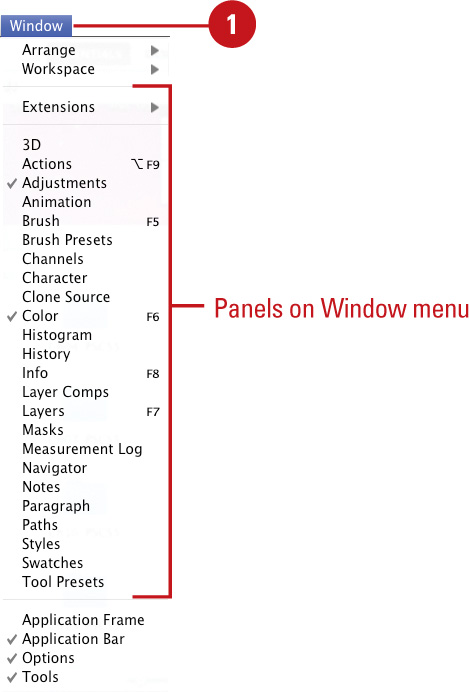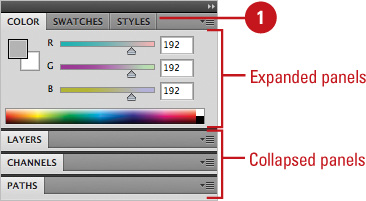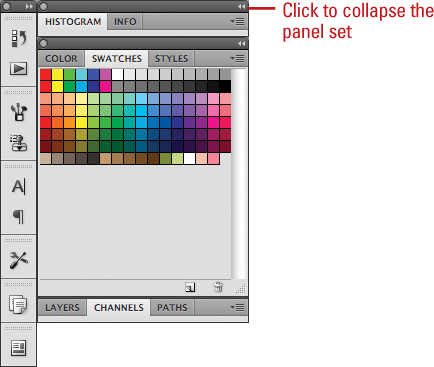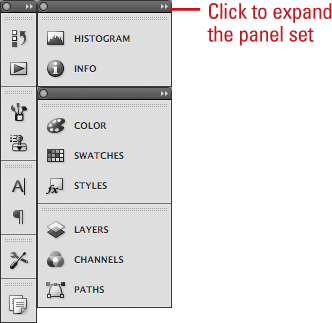Showing and Hiding Panels
Panels
give you easy access to many task-specific commands and operations from
color control to vector path information. By default, the main panel
display is located along the right side of your window. You can use the
Window menu or click a panel tab within a group to display it, and then
select options on the panel or choose panel-specific commands from the
Panel Options menu to perform actions. Instead of continually moving,
resizing, or opening and closing windows, you can use the header bar
with the panel tabs to collapse or expand individual panels within a
window to save space.
Open and Close a Panel
 Click the Window menu.
Click the Window menu.

|
 Click a panel name, such as Color, Layers, Navigator, Options, or Tools.
Click a panel name, such as Color, Layers, Navigator, Options, or Tools.
Timesaver
To close
a panel, or a single tab, click the Options menu and then click Close
Tab Group or Close (for a single tab). On the Mac, you can also click
the Close button on the panel.
|
Collapse or Expand a Panel
 To collapse or expand an open panel, click the dark gray area or double-click a title tab on the header bar of the panel.
To collapse or expand an open panel, click the dark gray area or double-click a title tab on the header bar of the panel.

If the panel is in icon mode, click on the icon to expand or collapse
it. To reduce the panel back to icon mode, click on the double
right-facing arrows in the dark gray area. To expand from icons to
panels, click on the double left facing arrows.
Working with Panels
The movable panels are
organized into groups, such as Color/ Swatches/Styles and
History/Actions, to save screen space and help with workflow. You can
also add or subtract specific panels within a group to customize your
workspace. A panel appears with a header, which includes the tab titles
and three options: the Collapse to Icons button, the Close button, and
an Options menu. The Options menu provides you with panel commands. The
entire set of panels includes a double arrow at the top you can use to
collapse and expand the entire panel back and forth between icons and
full panels.
Add a Panel
Subtract a Panel
|
If Photoshop’s panels get in the
way, just press the Tab key to temporarily hide all the panels. Or, you
can hold down the Shift key, and then press the Tab key to hide the
panels, but leave the Toolbox and Options bar. Press the Tab key again
to restore all the panels to their most recent positions.
|
Collapse and Expand the Panel Set Between Icons and Panels
- To
collapse the panel set to icons with text, click the double arrow
pointing right (Collapse to Icons) at the top of the panels.

- To expand the panel set from icons with text to full panels,
click the double arrow pointing left (Expand Panels) at the top of the
panels.
- To have an expanded panel icon automatically
collapse or hide when you click away, right-click (Win) or Control-click
(Mac) a panel, and then click Auto-Collapse Icon Panels or Auto-Show Hidden Panels.

Use the Panel Options Menu